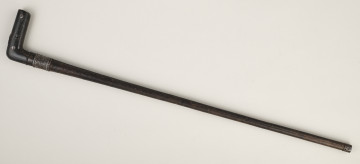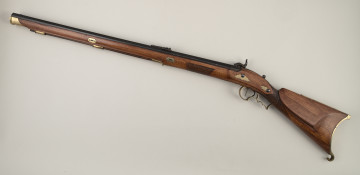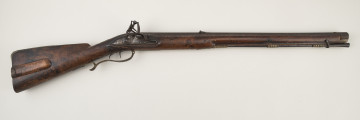
Shooting stick
20th century
Castle Museum in Łańcut
Part of the collection: Broń, instrumenty, varia
Sabre/ karabela. In common parlance, it is difficult to find a more Polish melee weapon than the sabre, and the karabela in particular, which is quickly associated with (mounted) cavalry, its fascinating victories or the „Little Knight”. At the same time, one must remember that the sabre was already known in Antiquity in Asia, from where it spread to the entire world. There is a great variety of sabres, many take the names from the formations that use them (cavalry, infantry), many – from their individual properties (the ordynka Armenian sabre, the shashka, shamshir). In Polish lands, the most common ones were the Hungarian-Polish sabre, the Armenian sabre, the Hussar sabre, the karabela, the Bathory sabre. In general it may be said that the sabre is a melee weapon used for slashing, with a curved, single-edged blade, frequently with a tip end, with the grip bent towards the front, an extensive crossguard, even though one can find types without any crossguard at all. The karabela is distinguished by the open grip, with a simplified head eagle profile on the blade. There are two types of karabela sabres: for combat and for parade purposes; the first ones were used in practice, the others, richly decorated (grip, crossguard, sheath) were used with Polish noble attire and, through their rich decorations, were meant to convey the status of the owner. It must be noted at this point that many parade karabela sabres have combat blades, such as the Łańcut one, a natural fact if sabres were converted from combat to parade ones. The blade of our sabre was created as a combat weapon most likely in Western Europe, as suggested by the inscription „Fringia” on the blade, with the decorations and workmanship of the grip, crossguard and sheath are typical for a parade sabre – which means this is a typical parade weapon. The parade part is the work of Georgius (Gyӧrgy) Szentjóby (SG punch), who became guild master in 1681, he lived in Komárom (SCV punch) – currently the city is divided between Hungary and Slovakia. Thanks to the marks (punches) we can say that the Łańcut sabre stems from the end of the 17th century, it is a parade weapon worn with Polish attire and has a combat blade most likely from the 17th century.
Author / creator
Dimensions
height: 90 cm, width: 15 cm
Object type
Weapons, instruments, varia
Technique
gilding
Material
leather, gem stone or decorative stone, steel
Creation time / dating
Creation / finding place
Owner
Castle Museum in Łańcut
Identification number
Location / status

20th century
Castle Museum in Łańcut

18th century
Castle Museum in Łańcut

18th century
Castle Museum in Łańcut
DISCOVER this TOPIC
Museum of King Jan III's Palace at Wilanów
DISCOVER this PATH
Educational path